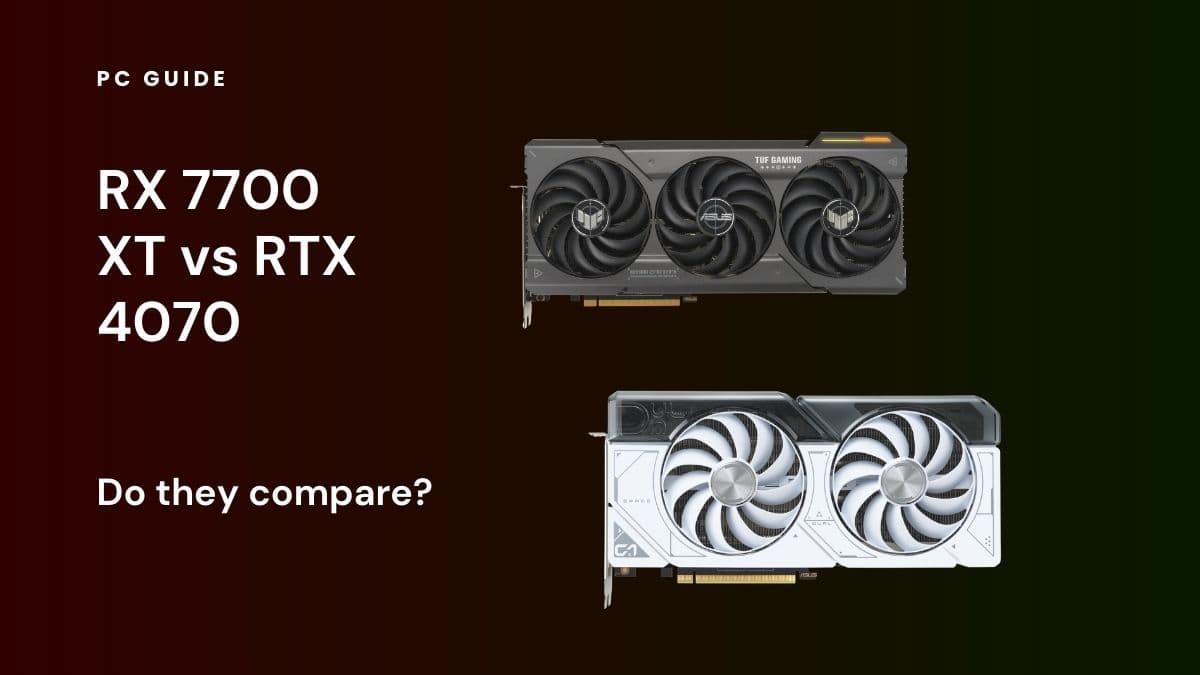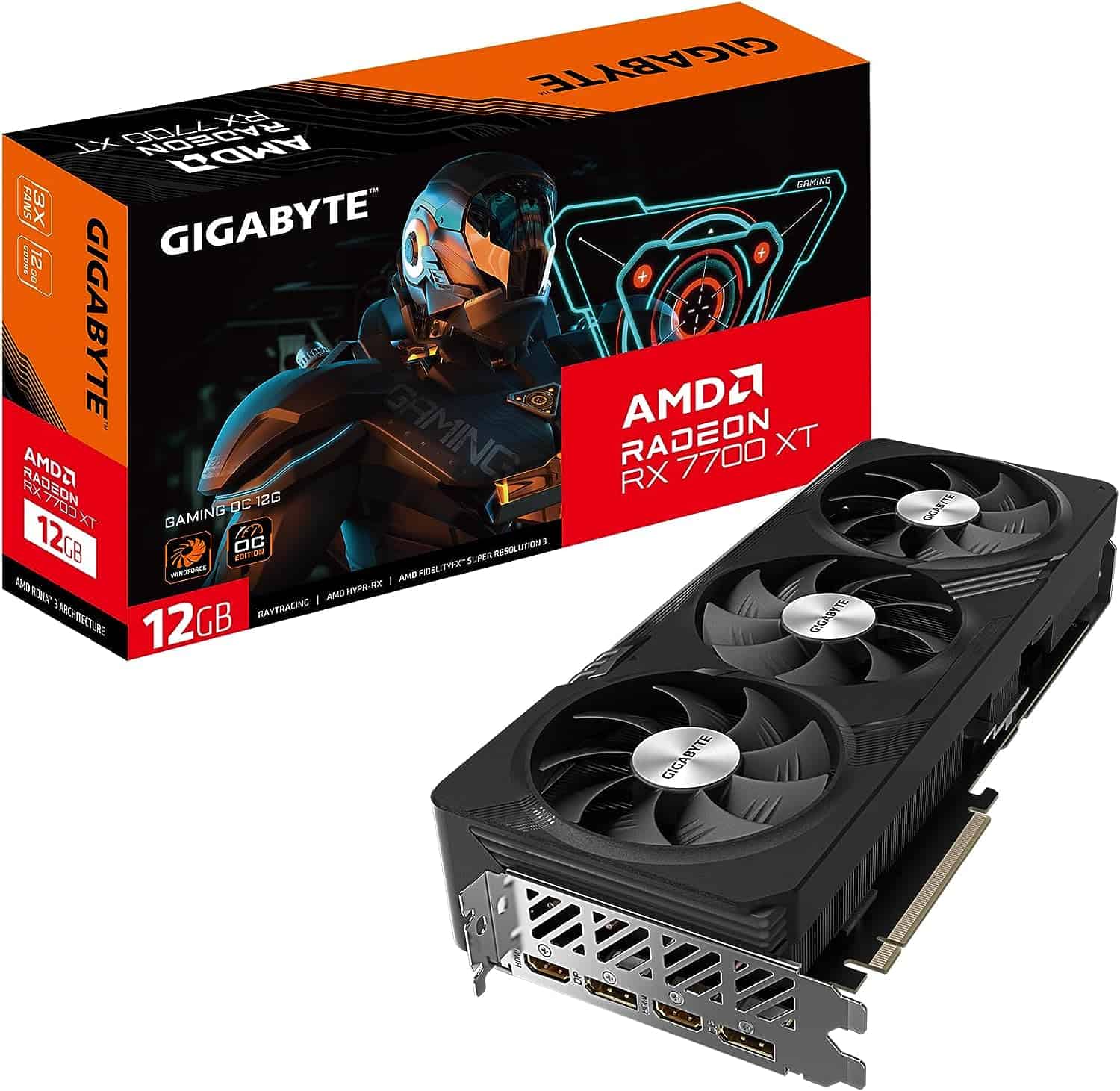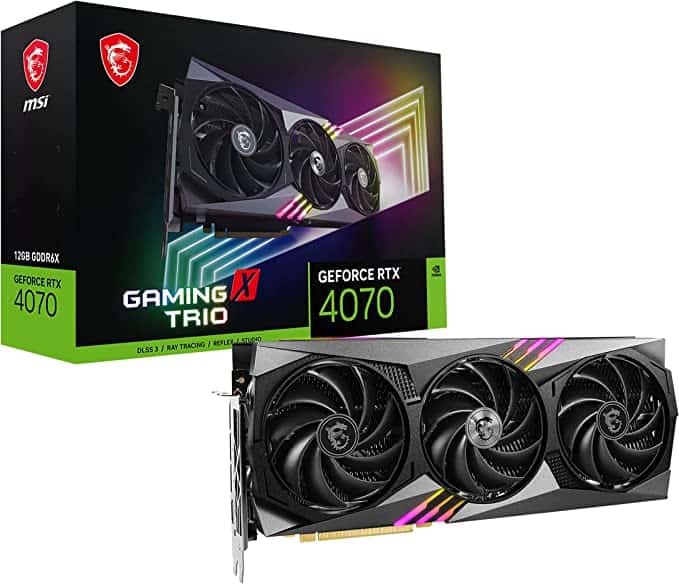RX 7700 XT vs RTX 4070 – do they compare?

Table of Contents
In the ever-evolving battleground of graphics card supremacy, the RX 7700 XT vs RTX 4070 showdown promises to be a tantalizing face-off. Nvidia’s RTX 4070, crafted with the seasoned GDDR6X technology, is designed with a clear emphasis on high-end performance and the demands of hardcore gaming.
On the other hand, the AMD Radeon RX 7700 XT from AMD has already shown its prowess in previous comparisons. How do these two cards stack up against each other – especially as the more powerful RX 7800 XT is purposefully lined up to take on the 4070? Dive in as we dissect the intricacies and capabilities of both.
RX 7700 XT vs RTX 4070: Specs
When delving into the intricacies of the specs table, the initial impression is that the Nvidia Geforce RTX 4070 has been fine-tuned for a higher performance edge, especially against cards like the RX 7700 XT. A standout feature of the RTX 4070 is its utilization of the advanced GDDR6X VRAM technology, not used in RDNA cards.
While both GPUs house 12GB of VRAM, the GDDR6X in the RTX 4070 offers a performance leap, evident in its superior memory bandwidth of 504.2 GB/s, compared to the 432.0 GB/s of the RX 7700 XT. This, combined with the same memory interface width, means the RTX 4070 can communicate a larger amount of information concurrently.
| Specifications | RX 7700 XT | RTX 4070 |
|---|---|---|
| Architecture | Navi 32 | AD104 |
| RT Accelerator | 54 | 46 |
| Cores | 3456 | 5888 |
| VRAM | 12 GB GDDR6 | 12GB GDDR6X |
| Memory Interface Width | 192-bits | 192-bit |
| Memory bandwidth | 432.0 GB/s | 504.2 GB/s |
| Process Technology | TSMC 5nm | TSMC 5nm |
| Base clock speed | 2171 MHz | 1920 MHz |
| Boost Clock speed | 2544 MHz | 2475 MHz |
| Graphics Card Power (TDP) | 245W | 200W |
| L3 cache | 48 MB | 0 |
| DisplayPort | 2.1 | 1.4a |
| MSRP | $449 | $599 |
Specs continued
Furthermore, Nvidia’s RTX 4070 boasts a staggering 5888 cores, considerably outclassing the 3456 cores of the RX 7700 XT. This higher core count, paired with its robust RT Accelerators, suggests that the 4070 is better equipped to handle complex graphic computations, essential for high-fidelity gaming, frame generation, and demanding graphic applications. And you’d expect that, given the Nvidia card is around $150 more.
Interestingly, despite its seemingly superior firepower, the RTX 4070 manages to be more energy efficient with a TDP of just 200W compared to the 245W of the RX 7700 XT. However, it’s worth noting that AMD’s RX 7700 XT does shine in certain areas. With a higher base clock speed of 2171 MHz and a slightly superior boost clock speed of 2544 MHz, it demonstrates that AMD is pushing its architectural limits, and at a lower price than the competition here.
RX 7700 XT vs RTX 4070: Performance
In the arena of raw performance, it seems that the RX 7700 XT might be stepping into the lion’s den when squared off against the RTX 4070. While AMD has positioned its cards strategically against Nvidia’s offerings in the past, this matchup might be more skewed toward Nvidia’s advantage.
The architectural prowess of the RTX 4070, especially its edge in ray tracing capabilities – an area Nvidia has held a steady lead in – suggests that it would dominate in RT-intensive gaming scenarios. The RX 7700 XT, with its commendable specs, would undoubtedly hold its ground and put up a respectable fight, but taking on the RTX 4070 head-to-head might be a tall order. That’s something for other 7000 series XT graphics cards, notably the RX 7800 XT which has the same release date as the 7700 XT (September 6th).
But until a direct performance test is conducted, speculatively based on the technical specifics, the RTX 4070 appears poised to be the superior performer in this comparison – especially in demanding, ray tracing-enriched environments.
RX 7700 XT vs RTX 4070: Price
When it comes to pricing, it’s always a tightrope walk between performance and cost. The RTX 4070, with its impressive specs, surprisingly doesn’t carry an exorbitantly high price tag relative to its capabilities. Nvidia seems to have struck a good balance with this model, making it one of their more value-oriented offerings in recent times. On the other hand, the RX 7700 XT, aimed at a more budget-conscious PC demographic, is set to launch with an even more wallet-friendly price. This positioning makes it an appealing option for those wanting solid performance without breaking the bank. Although the MSRP was $449, the price can vary from model to model. We’ve made a list of the best RX 7700 XT graphics cards so you can get the most out of your investment.
Camilo’s final thoughts
Drawing the comparison to a close, it’s evident that both the RX 7700 XT and the RTX 4070 have their unique strengths. The RTX 4070, with its enhanced ray tracing abilities and beefed-up specs, is likely the more potent performer of the two, especially in graphic-intensive scenarios.
However, the RX 7700 XT, with its attractive price tag, can’t be dismissed as it provides a compelling option for budget-conscious gamers seeking commendable performance. Ultimately, the choice boils down to individual priorities: if you’re after the pinnacle of performance and are willing to pay a bit more, the RTX 4070 stands tall. But if value for money ranks higher on your list, the RX 7700 XT is hard to overlook. Read WePC’s (our sister-site) RX 7700 XT review here.
- Now read: RX 7700 XT vs RTX 4060 Ti 16GB


